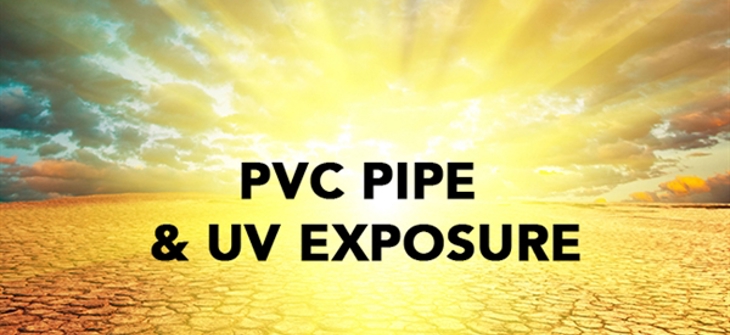
PVC Pipe and Ultraviolet (UV) Protection
Hello all… how about a quick blog on PVC pipe and UV protection?
I am often asked about the effects of UV exposure caused by sunlight on PVC sewer pipes and how to provide protection. Many people in the civil engineering industry have concerns with UV exposure and polymeric-based sewer materials (e.g. thermoplastic, PVC, HDPE, other plastic pipe) and believe that these materials, basically, disintegrate under long term exposure. This is not what happens. Like other polymeric materials, PVC pipe can experience some forms of slight degradation, but not disintegration, as a result of long-term UV exposure.
A test and study performed by the PVC Pipe Association (formerly known as Uni-Bell) was completed in 1997 called “The Effects of Ultraviolet Aging on PVC Pipe, UNI-TR-5-97”. The report’s findings, after two years of extreme sun exposure in the 12 locations across the US, showed no considerable change to the modulus of tensile elasticity and the tensile strength of the PVC pipe used. It was concluded that this was evidence that the PVC pipe’s ability to resist external soil loads and traffic loads was not adversely altered after the two years of exposure. Further substantiating this was lab testing done for pipe flattening and stiffness. There were small reductions in pipe impact strength, but was not significant enough to warrant concern since the lowest tested values exceeded those of many alternative buried pipe materials. The PVC Pipe Association’s Handbook of PVC Pipe states that the exposure of UV radiation can also result in a change in the pipe’s surface color.
Basically, PVC pipe exposed to sunlight can discolor and become hardened or slightly more brittle on the outer surface of the pipe, but the pipe itself has no adverse changes with installation and its ability to carry loads, if handled and installed properly. A two year exposure limit is the practical duration used in the industry. It is recommended that anything that can be exposed for longer be either covered with a tarp or shielded with an opaque surface. It can also be painted with a latex water-based paint for long-term concern, for example, if exposed at an outfall and there are concerns of impacts of some kind.
It is important to remember that PVC pipe materials have achieved widespread acceptance for water, sewer and drainage applications across the country for over 50 years. This is due to PVC pipe’s many inherent benefits in water/sewer applications, but most notably for its high resistance to aggressively corrosive environments. Contech’s PVC pipe products, for example, are manufactured using a PVC compound that incorporates twice the industry standard amount of Titanium Dioxide UV inhibitor to further help protect the pipe from UV exposure.
Hopefully that provides some clarity and alleviates any concerns. As always, any questions, please shoot me a quick email. Thanks!
